- Pest insect saline solution
- Ammonia against aphids
- The use of ammonia from aphids
Ammonia against aphids is one of the most effective folk remedies. In the garden, in the garden is used to process crops from pests, for feeding. Ammonia is an ammonia compound, used as an additional source of nitrogen. It has been observed that aphid sensitive to its fumes, the use of this substance in the garden gives an excellent result. They can be processed:
- fruit trees (including Apple tree, pear, plum and cherry);
- roses;
- currant;
- cucumbers;
- tomatoes;
- pepper;
- cabbage;
- viburnum;
- dill;
- raspberries;
- many other garden crops.
If the smell of the product does not bother, then you can use aphids on indoor plants.
Solution preparation
Ammonia against aphids is used in a diluted form, since an excess of nitrogen leads to the destruction of chlorophyll, the death of leaves.
How to dilute alcohol so as not to damage the plant? The standard amount of a single product for the processing of horticultural crops is 10 l of the finished product. Ammonia from aphids is diluted in cold water. 5 ml of ammonia is required per 1 liter of liquid. To prepare 10 liters of an effective product, you need 50 ml of ammonia.
The aphid solution is thoroughly mixed, added soap base. Soap is necessary to ensure that the active component sticks to the leaves of plants. It is recommended to use a natural product - laundry, tar soap, or baby.
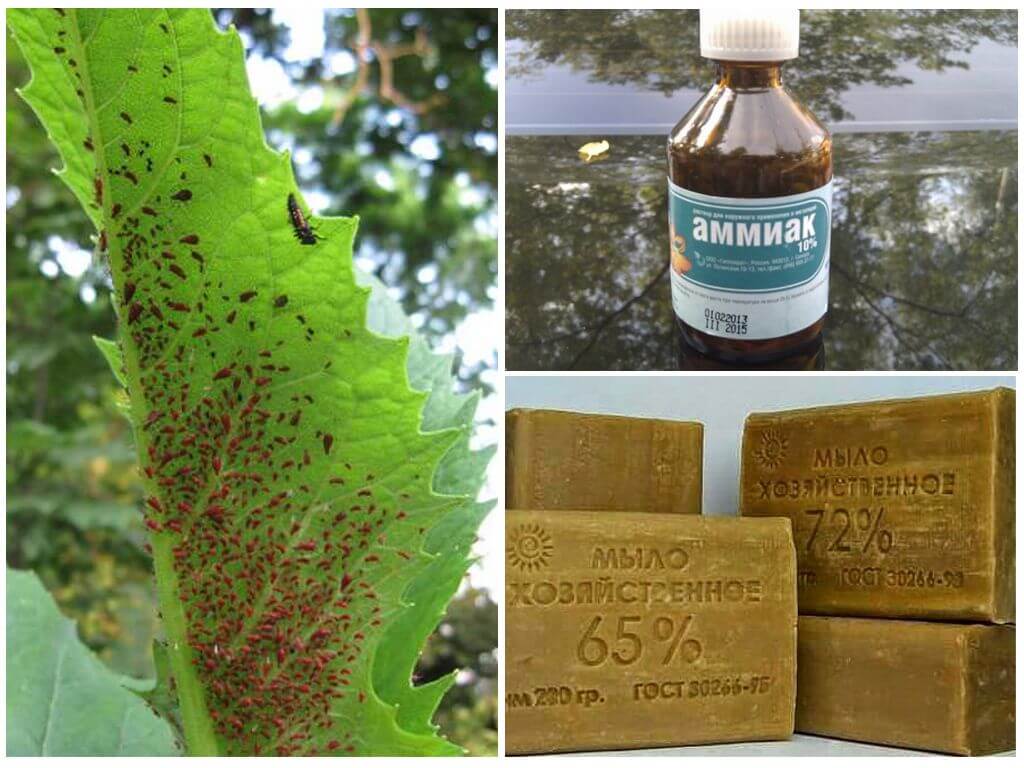
If the soap is in a bar, it must first be grated, diluted in 1 liter of warm water, then added to a solution with ammonia, so that in total 10 liters of aphids are obtained.
On a note!
Destroying aphids with ammonia on the currant slightly different from other cultures. Instead of soap, a pinch of washing powder is used in the recipe, the frequency of spraying is 1 time in 10 days.
Ammonia against aphids must be prepared immediately before use, since the active component is characterized by rapid volatility. The remains of the unused solution are poured under the root as fertilizer.
Application
Amphibian aphids are controlled using a watering can. A spray bottle or a spray bottle will not work in this case. Small drops are sprayed in the air, ammonia does not reach the surface of the leaves.
A watering can is needed with a wide nozzle, so that drops of water cover the entire twig, fall on the lower part of the leaves. It is there that aphids hide. The procedure should be carried out in dry, calm weather in the evening or early in the morning. If it has rained, ammonia spraying is repeated the next day.
Important!
Ammonia from aphids acts as fertilizer. In most cases, cultures respond positively to a nitrogen source. Growth is accelerated, the condition of leaves, inflorescences improves, fruits are formed and ripen faster. But on some plants it is not worth using a solution of ammonia - strawberries, onions, garlic. For example, if aphids appeared on strawberries, from folk remedies it is recommended to use: wood ash, onion husks, tobaccogarlic.
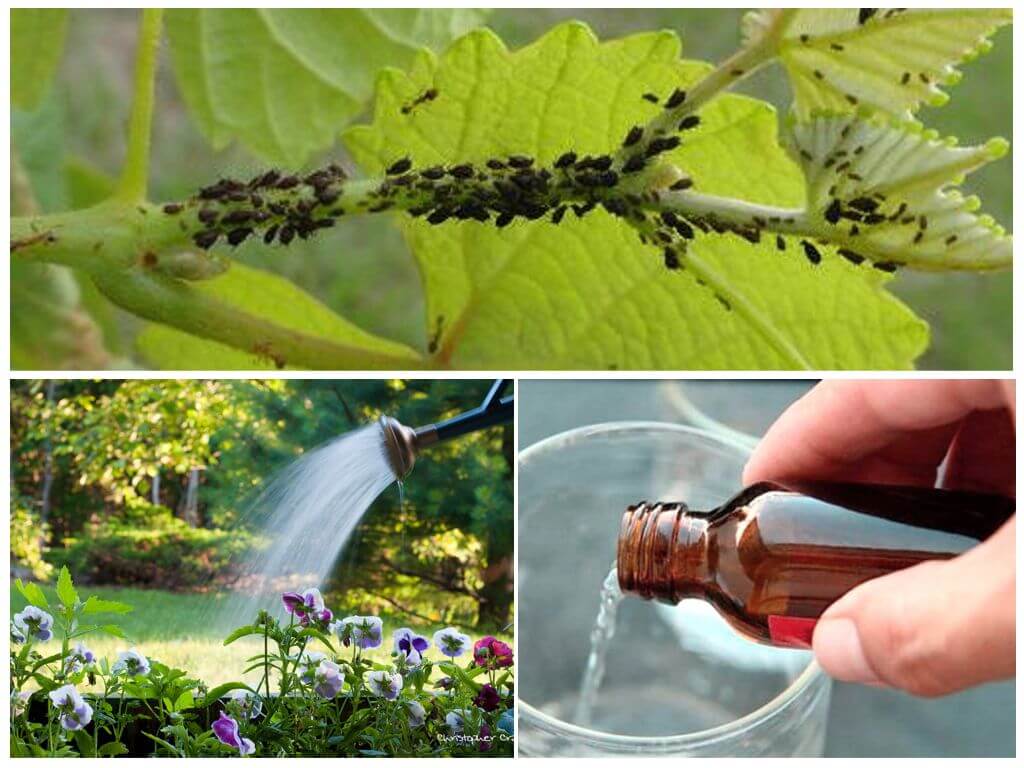
Processing plants from aphids is carried out throughout the warm season.Start in early spring. The frequency of use depends on the degree of infection of the plants. The standard scheme is once every 2 weeks. For the prevention of ammonia from aphids, use 1 time per month. From biological products have proven themselves well remedy Fitoverm, Arrow, Inta-Vir.
Advantages and disadvantages of the method
Liquid ammonia is used by many gardeners from aphids in the country. It helps protect plants from many pests, especially aphids. Folk remedy It has advantages and disadvantages, but this does not prevent it from being one of the most used drugs in the garden.
Pros:
- safe, natural substance;
- used as fertilizer;
- begins to act already during processing;
- for complete disposal of aphids, only 2 procedures are required with an interval of 14 days;
- minimum cost.
Minuses:
- excess nitrogen leads to yellowing, death of leaves, disruption of natural processes in plant tissues;
- protection is valid while there is a smell of nitrogen;
- it is inconvenient to use on garden trees, since the small spray jet is ineffective;
- a pungent smell during the preparation of the solution makes you use a respirator, mask;
- upon inhalation of vapors by a person, deterioration of health occurs.
To avoid trouble, to achieve good results, it is necessary to work with ammonia in rubber gloves, in a respirator, spray the plants according to the rules.
Important!
Experts do not recommend using nitrogen products when planting crops on a land plot for the first year. This leads to the accumulation of salts in the soil, a delay in the growth of the root system, and plant weakness.
Efficiency
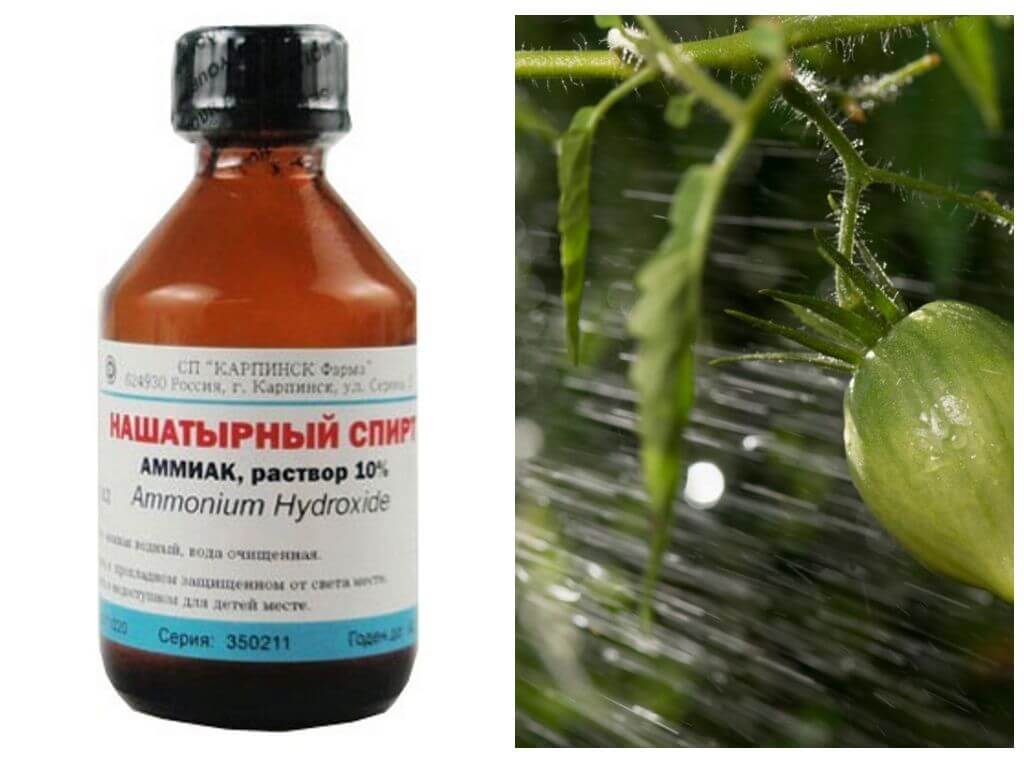
Fighting aphids with ammonia alcohol causes a storm of emotions. Gardeners are actively discussing the topic on the forums, leaving feedback. The effectiveness of the method is refuted and confirmed.
Folk remedy helps fight aphids with moderate infection of the site, provided that the entire warm season is continuously treated with a frequency of 2 weeks. In parallel should destroy ants, because it is these insects that spread aphids throughout the garden, the garden.
Reviews
Ammonia scares off many pests with its smell. But do not forget that it erodes very quickly. Reprocessing can only be done after 2 weeks, and this is a long time. Additionally, other folk remedies should be used. We use ash with soap. Such a tandem acts quickly. Ammonia repels, ash destroys the most persistent.
Alina, Moscow
In the fresh air, ammonia erodes very quickly. His actions last only a few hours. Pairs of ammonia drive adult individuals out of the bush, the larvae cannot quickly escape, and the eggs remain completely safe. The issue of efficiency is in doubt!
Svetlana, Voronezh
Ammonia is one of the most common pests among gardeners. However, for the complete destruction of aphids, additional measures must be taken. Ammonia serves as a trigger for the expulsion of pests, the effect must be fixed other store tools. It is advisable to use ash.
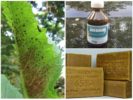
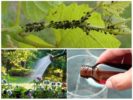
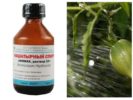
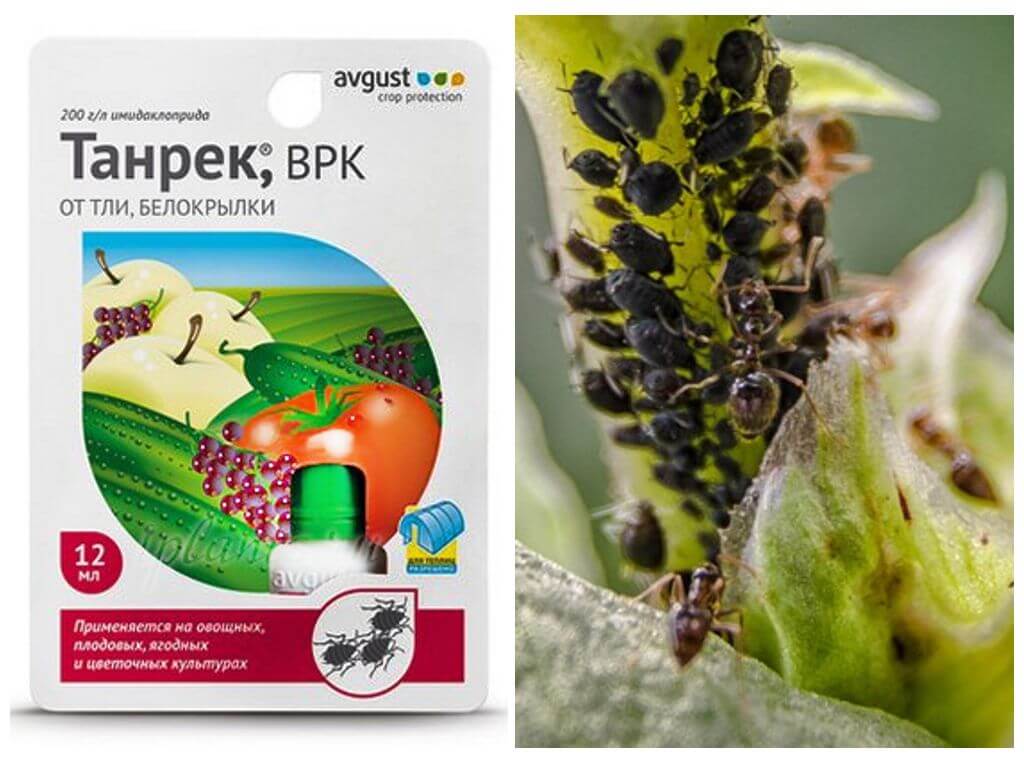
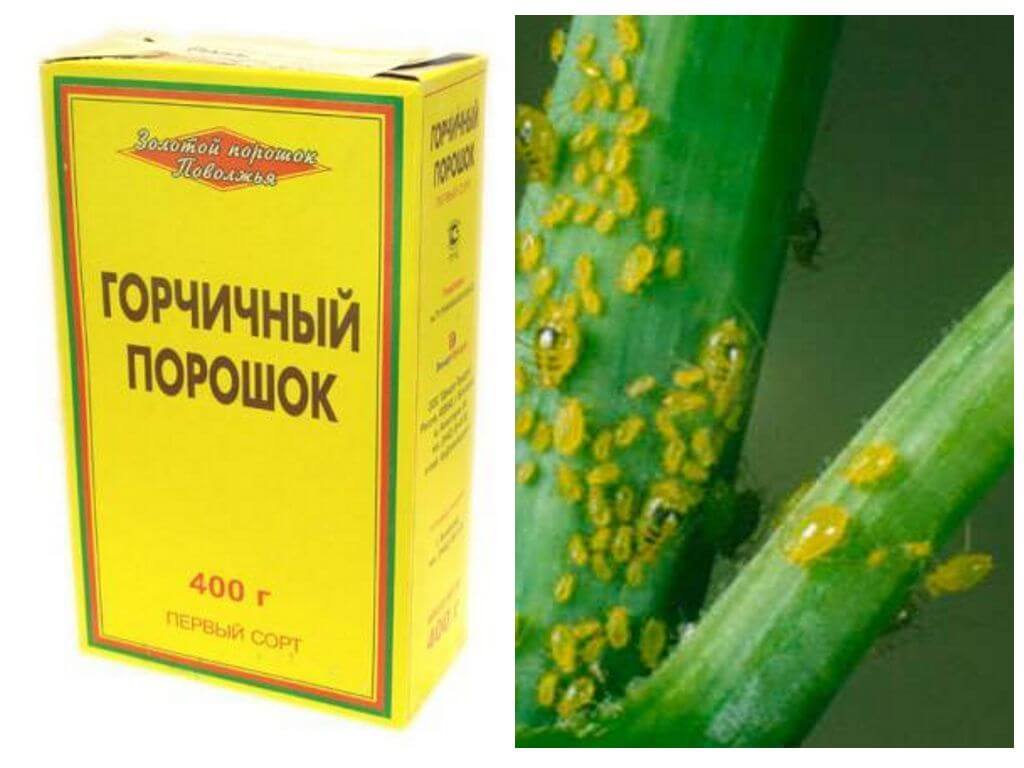
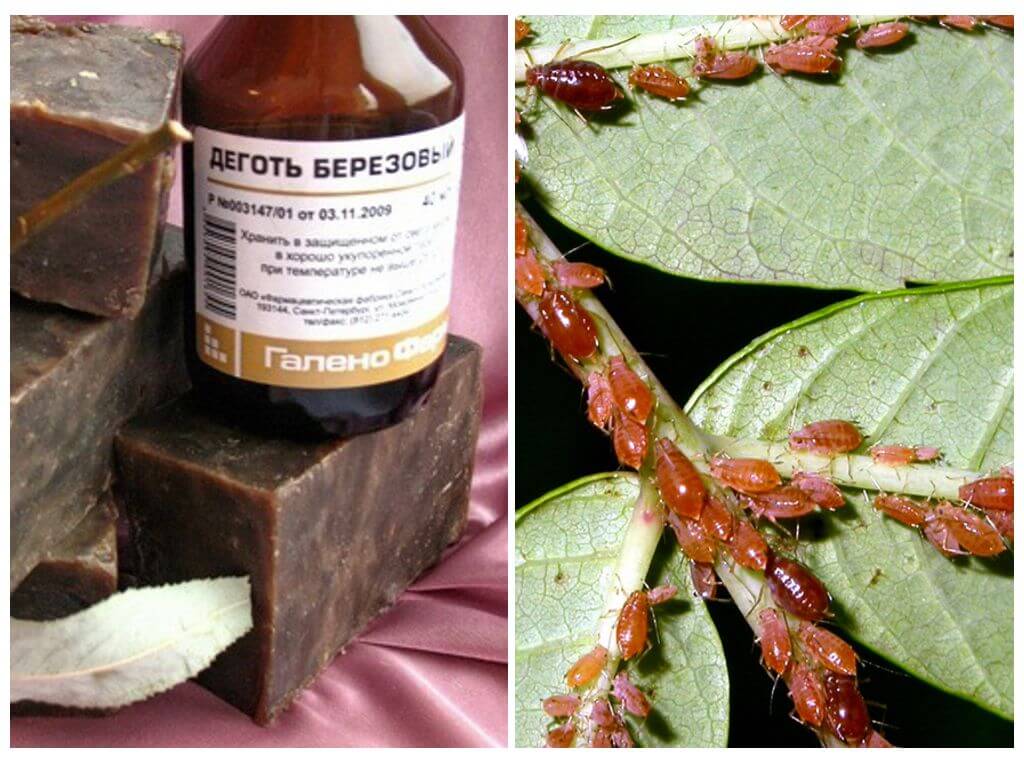
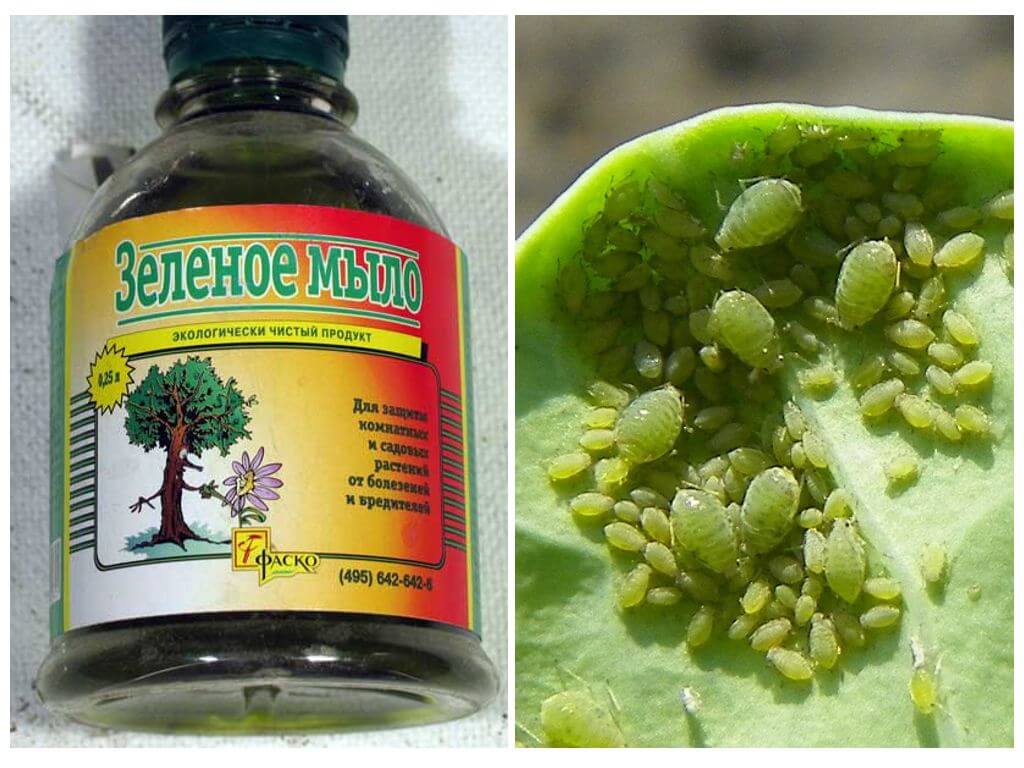
I don’t understand why add soap to the solution with ammonia? It does not retain alcohol on the leaves. Maybe the effect of soap, not alcohol?
As far as I know, the main weapon of ammonia in a pungent smell. Keep it on the surface of plants is problematic. Couples do not last too long. Alcohol quickly disappears. Especially if the breeze blows at him. I don’t see the point of using ammonia from aphids!
But it does. People do not speak in vain. What is the difference how, most importantly, it helps. The neighbor said, I myself tried on the currant. True, at the same time sprinkled leaves with ash, cinnamon, garlic laid out.In general, I first drove it away, then fixed the result.
If a bunch of pests are found on the plant, of course, they will rush into loose, if you pour water on them, and even with ammonia. Soap, as I understand it, protects the sheet, creates a film, and also glues aphids together, interferes with movement.
So the point is to frighten off. If the aphid falls to the ground from a bush, then it will climb on it for a long time. Of course, if there are a lot of anthills on the site, this is not a problem. In other cases, ammonia will do the trick. Then it remains to maintain position.
I have tried. The ammonia helped me. Get rid of on the sink. Sprayed every month, first after 2 weeks.
My opinion is that it does not make sense to use ammonia from pests in the garden or in the garden. There are simpler and more reliable ways. For example, grate tree trunks with a garlic arrow, spray the leaves with a solution of cinnamon, soda, sprinkle with ash.
I had to fight aphids on cucumbers. They also tried ammonia. I will not say that the result was strong, but there were fewer insects. Then they finished off with tinctures from herbs.